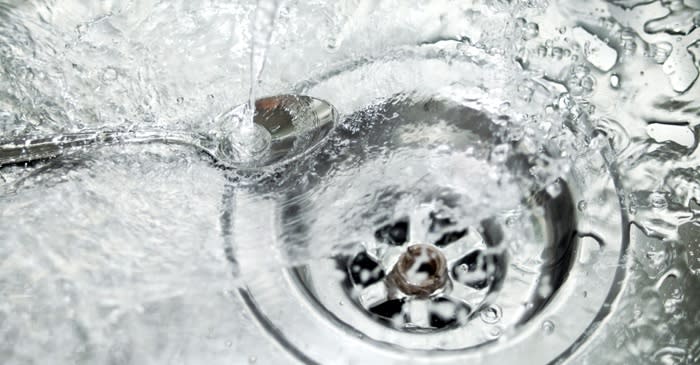Using Less Water and Saving More Energy
Reducing your water and energy consumption in your kitchen is a great way to save money, and help the environment. These sustainability tips can help:

Install a low-flow faucet aerator
You’ll achieve the same dishwashing power while saving water every time you turn on the tap. If you’re worried about keeping the suds alive with this water-saving approach, Dawn has the perfect formula to keep them going. Try using Dawn® Platinum Erasing Dish Foam. Just one pump and a damp sponge, and a sink full of dishes is done. You don’t even have to fill the sink with water.
Fix leaky faucets
Even small, slow drips can waste up to 30 gallons of water a day. Be sure to keep your faucets, toilets, appliances, showers, and tubs in good working order year round.
The fewer dishes, the less there is to clean
With fewer dishes to wash, you save water, energy, and time. So try reusing utensils while prepping, serving food in the pots you cooked them in (versus serving bowls), and turning the water on only when absolutely necessary.
Collect cold water
If it takes a minute or two for water to get warm enough for dishwashing, don’t waste cold water. Fill a pot and save it for future use––like for cooking or watering plants.
Install energy-saving light bulbs
Using either lower-wattage or energy-efficient fluorescent bulbs can add up to big savings.
The heat is on
Gas and heating bills can skyrocket in winter. Before the big chill sets in, tune up your furnace and make sure you replace or clean its filters once a month to keep it running efficiently.
Cold cash
The summer can heat up electric bills, too. Save money by lowering your water heater temperature gauge just a few degrees, or try doing laundry in cold water. Specifically formulated cold water detergents like Tide® Coldwater will help you get clean clothes––and a lower energy bill.

Dishwashing pre-game
Fill one side with warm water for soaking and washing. Fill the other side with cold water for rinsing.
Find balance
Add dish soap to the warm water side, but not too much. Find the right balance of suds, as creating too many can retain grease and food soils instead of letting them settle to the bottom of the sink.
Create an efficient dishwashing game plan
Dispose of any remaining waste and soak the dishes in the warm water. While the toughest dishes are soaking, start cleaning the easier ones. Then rinse in the cold water and set them aside to dry.
Prefer direct application of soap to dishes?
If you prefer direct application of dish soap instead of filling up the sink, turn the water off when not in use. You can also install a low-flow faucet aerator. You’ll achieve the same dishwashing-power, and you’ll be saving water every time you turn on the tap. For this approach, try using Dawn® Platinum Erasing Dish Foam. Just one pump and a damp sponge, and a sink full of dishes is done.
